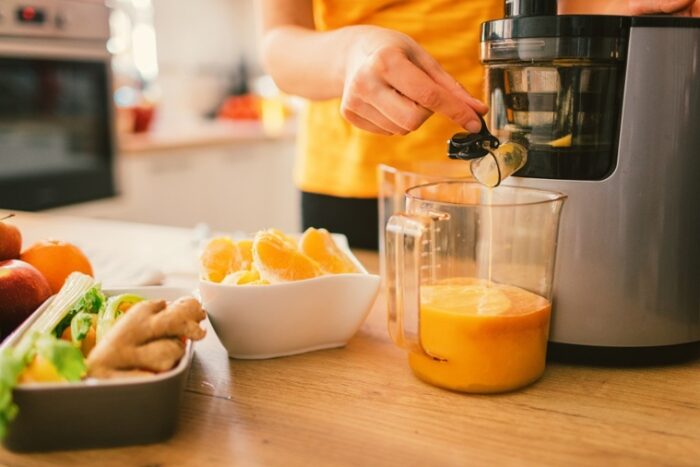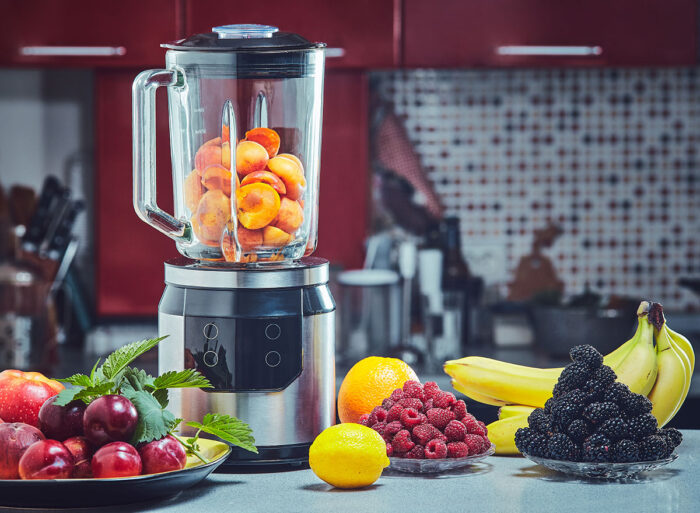
A widespread misunderstanding is that blending and juicing are the same thing. It causes confusion among buyers, who are often just looking for a quick way to turn a pile of fruit and vegetables in their kitchen into a healthy glass of liquid. However, there are various methods for doing so, and it is crucial to understand them so that you can make the best decision for yourself.
To grab healthy juicing and smoothie recipes, visit www.JuicingNation.com
What’s the difference between blending and juicing?
Pulverizing the ingredients is what a blender does. The best ones can make a delicious smoothie in seconds. Because you drink everything you blend, there’s almost little waste, and they’re usually simple to use and easy to clean. Plus, they’re versatile enough to be used in soups, sauces, dips, cocktails, and more.
You must get the balance of ingredients right if you want to add more vegetables to your smoothies; otherwise, you may end up with a thick and gloopy or thin and bitty drink, which are both unappealing. Nuts, dairy, protein powders, and honey can all help to improve the flavor of beverages made with leafy greens or bitter vegetables.
Juicers extract the juice from the ingredients you add, removing the pulp and leaving a smooth liquid behind. Some come with smoothie attachments for juicing softer fruits to make thicker drinks, while others have citrus attachments for pulpy orange juice. Bananas and other starchy fruits are not suitable for juicing. You can learn more about the latest technologies that make blending juices for your regular diet plans and daily needs easier.
It takes a lot of vegetables to make a juice, so there’s typically a lot of waste pulp leftover, and they usually have at least five different sections to clean, which may be a pain in the mornings.
To know which juicers and blenders are the best for you, visit mykitchenadvisor.com.
Juicing’s Advantages
- Nutrient Boost: Juicers are an excellent method to include extra veggies and fruits in your everyday diet. Although eating fruits and vegetables is superior to not eating them at all, drinking them with a twist can help you gain the edge in this world where fitness reigns.
- Convenience: When you’re in a rush, they are fantastic to-go dinners. You can make the juice ahead of time or even freeze a large batch to drink later.
- More Variety: You can combine various fruits and vegetables, including those you don’t like. It is a sure way to replenish the nutrients you’ve lacked in your otherwise unhealthy diet.
- Using Ripe Veggies and Fruits: When vegetables and fruits get ripe, many people toss them out. Juicing, on the other hand, is an excellent technique to reduce waste. Furthermore, well-ripened vegetables and fruits might have even more flavor!
Juicing’s Drawbacks
- Costly: Juicing can be expensive due to the raw ingredients used and the effort involved. The process is time-consuming since it entails buying the produce, washing it, peeling and slicing it, and then juicing it. Not to mention the cleanup you will have to do after your husband creates a stir in your kitchen. It also necessitates the use of a high-quality juicer. Even if you already have a juicer, you’ll need many vegetables and fruits to get a reasonable volume of juice out of it.
- Low Fiber: Juicing veggies and fruits means you receive less fiber than if you eat them whole. You lose roughage and reduce the amount of other essential minerals and vitamins when you remove the pulp.
- Not a meal substitute: If you’re searching for a quick way to meet your nutrient requirements for breakfast or lunch, juicing isn’t the way to go. They can only help with your nutrition as supplements. Because the juice contains only water and natural carbohydrates, you will get hungry in some time. You can drink fluids at any time during your workout or whenever you feel like it, but you cannot substitute them with your daily meals.

Blending’s Advantages
- Fibrous content: Smoothies help preserve the fiber and antioxidant contents of the vegetables. Blenders combine all the ingredients faster to create a homogeneous concoction known as a smoothie. In addition to the health advantages of juicing, you’ll gain the antioxidants you need to rid pollutants from your body effectively.
- Affordable: A juicer is more expensive than a blender. In terms of the ingredients, you won’t need to buy them in significant quantities. You’ll get a good amount of mixture if you are making a smoothie out of leftover elements.
- Versatile: You can blend almost anything using a blender. In addition to fruits and vegetables, you can add collagen powder, yogurt, protein powder, almonds, milk, and whatever else you choose. Smoothies allow you to be creative while still ensuring that you get a healthy balance of nutrients every day. To make your smoothie more nutritious, add oats, grains, or pulses.
Blending’s Drawbacks
- Hidden Calories: Almonds, Greek yogurt, and avocado are just a few of the ingredients that may quickly boost the calories in your smoothie. It isn’t to say you shouldn’t include them! However, use it sparingly.
- Drink as soon as possible: Smoothies, like juices, lose their nutritional value fast, making it ineffective to consume them later.

Conclusion
Both blending and juicing have advantages and disadvantages. Before you buy a juicer or blender, make sure you know everything there is to know about them. Be aware that cleaning and maintenance will be required on a regular basis for both of them.
Smoothies are a better option than missing meals if you rush to work and don’t have time for breakfast. If you want something light to drink in between meals, juicing is the way to go.
If you’re on a serious diet or weight-loss plan, you’ll need to talk to your dietician about which option is best for you. Juices and smoothies have become extremely popular in recent years as a result of people’s inability or unwillingness to cut vegetables and cook food.
Juicing and blending bypass the mastication process, which is detrimental in the long term. Therefore, it is advised that you do not substitute beverages for meals. Only use these options if you don’t have time or if you can’t meet your daily nutrition levels.

















